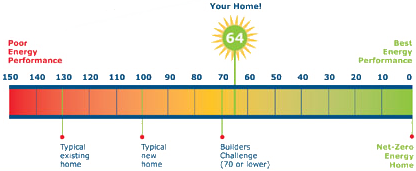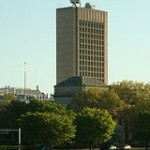
The clean energy revolution has never been more critical. In a report released December 8th, the Environmental Protection Agency (EPA) made a direct link between the controversial drilling practice known as hydraulic fracturing and groundwater contamination. For years, hydraulic fracturing, or “fracking” a method to extract oil and gas from underground deposits that uses a mixture of sand, water and chemicals to fracture shale rock and release the gas, has been taking place across the country, mainly unabated and unquestioned by politicians and industry professionals.
Now however, it’s official: fracking has been correlated to tainted groundwater that is often entirely undrinkable by area residents and wildlife alike. The EPA report specifically notes high concentrations of benzene, xylene, gasoline and diesel fuel in groundwater supplies linked to wastewater pits and deeper fresh water wells. This indicates the difficulty in tracking all fracking-related chemicals as the gas industry is not required to reveal all chemical elements, a product of a loophole commonly referred to as the “Halliburton Loophole.”
While this particular EPA report focuses on the town of Pavilion, WY; Dimock, a town of 1400 people in northeastern Pennsylvania, has made recent national headlines as well over the question of drinking water quality. In fact, last week residents and nonprofit groups from neighboring areas, including New York City, drove to Dimock to supply fresh drinking water to its residents as the PA DEP had decided to ignore the issue altogether. Cabot Oil and Gas, the company responsible for fracking in Dimock, had recently ended daily deliveries of clean water asserting that “Dimock’s water is safe to drink.” The PA DEP gave Cabot permission last month to stop paying for clean water and a judge, who sits on the state’s Environmental Hearing Board, “declined to issue an emergency order compelling Cabot to continue the deliveries.”
Never has the need for clean energy alternatives been more necessary. Fracking is a national energy dilemma: on one side energy companies stand to gain considerable profit on harvesting natural gas, while on the other citizens, eager to make quick money, learn only too late the harsh environmental and health-related risks related to the industry.
The EPA report comes at a critical time. As the U.S. is steamrolling hundreds of new fracking sites each month, we are still hesitant to embrace cleaner, renewable technologies. Fracking is a dangerous practice that is clouded by many political and industry interests. The EPA report is a good place to start for stronger regulation and awareness of a very questionable method of extracting this domestic energy source.






 Last week
Last week